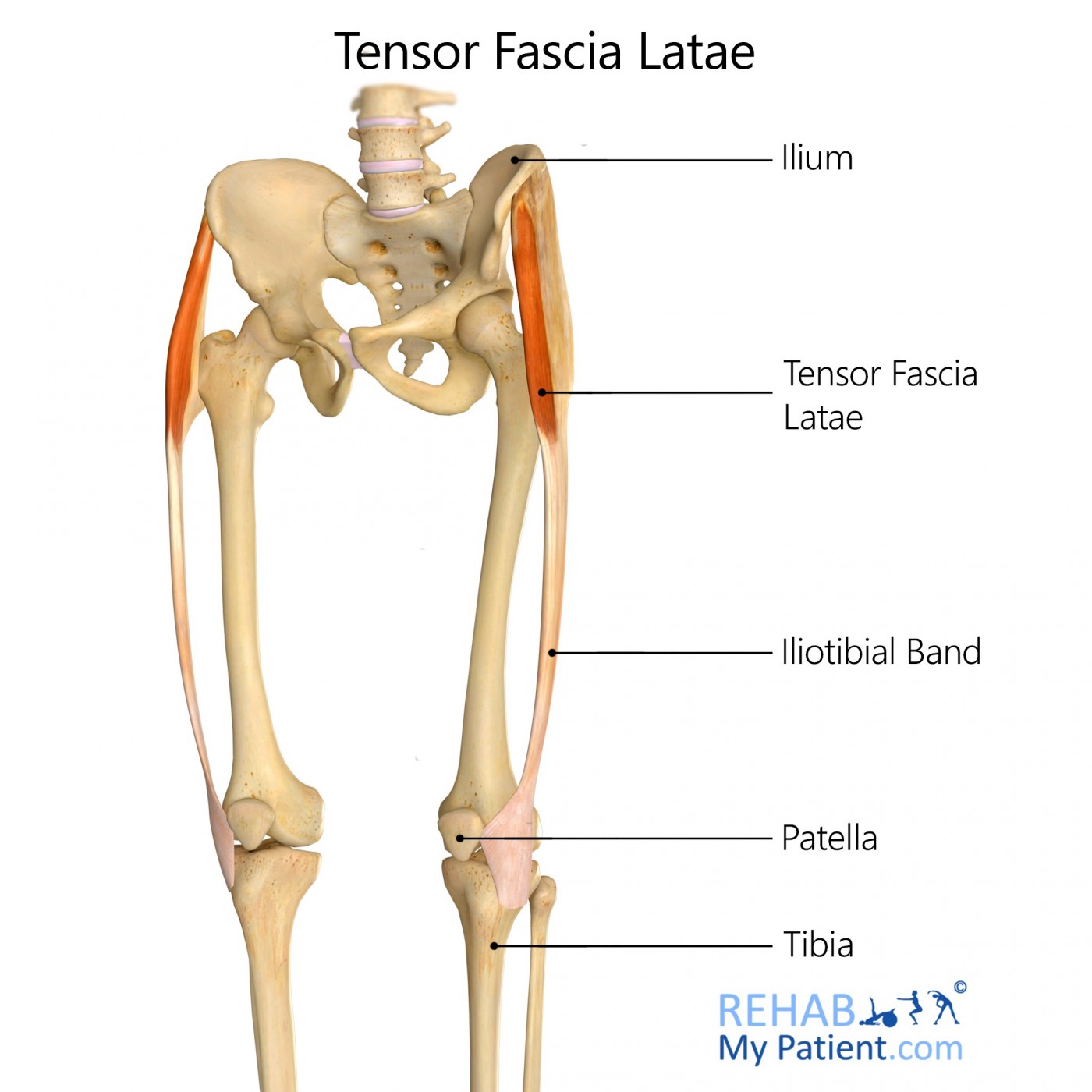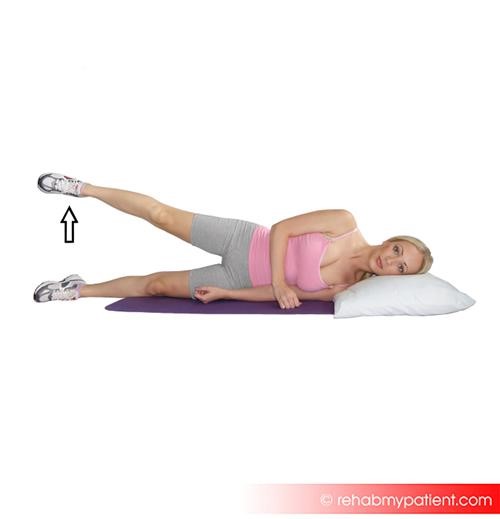
General information
The tensor fascia latae is one of the muscles located within the thigh.
Literal meaning
Stretcher of the side band.
Interesting information
Various factors can make an individual more prone to Iliotibial Band Syndrome, or Runner’s Knee. An individual who has a naturally wide or tight iliotibial band will be more susceptible to an injury in this muscle. Weakened hip muscles are another significant factor in injuries to this muscle.
Over pronation or poor biomechanics of the foot can increase the risk of injury. If the foot flattens or rolls in, the lower leg will end up rotating as well as the knee, which causes an increased amount of friction on the band. Running on a hill or cambered road and differences in leg lengths are also factors that might cause this muscle to become injured.
Pain may worsen upon straightening or bending the knee, with tenderness on the side of the injured knee. There could also be tightness in the band that will need to be assessed using an Ober’s test. The individual may also notice tender trigger points in the buttocks and gluteal muscle areas and there will be a weakness in hip abduction.
Origin
Outer lip of the anterior iliac crest.
Underside of the iliotibial tract.
Lateral aspect in the anterior superior iliac spine.
Insertion
Descending between the two layers in the iliotibial tract.
Function
Flexion and medial rotation of the hip.
Aids in weak extension of the knee.
Lateral rotation in the leg at the knee.
Stabilization of the knee and hip when standing.
Nerve supply
Superior gluteal nerve S1, L4-L5.
Blood supply
Inferior and superior arteries carry the blood from the internal iliac artery into the muscle.
Superficial circumflex iliac artery delivers the blood from the femoral artery.

Relevant research
Even though hip arthroscopic techniques have evolved and developed over the past five to 10 years to help active athletes, the mechanisms with an athletic hip injury across a number of different sports is not properly understood. The review was conducted to help learn of the strategies relating to the mechanics of the hip joint. The piece presents and describes the variable mechanisms relating to injuries in sports that are often associated with hip injuries in young athletes.
Torry MR, Schenker ML, Martin HD, Hogoboom D, Philippon MJ. Neuromuscular hip biomechanics and pathology in the athlete. Clin Sports Med. 2006;25(2):179-vii. doi:10.1016/j.csm.2005.12.002.
Tensor fascia latae exercises
Lying down leg lift
Do this exercise while lying on a firm bed or other type of exercise table. Lie on the right side with the arm bracing the head. The exercise can be performed with or without a weight. If using a weight, place a toe or small ankle weight around the left instep. Lift the left leg level with the hip and swing forward slowly to a 45-degree angle from the torso. Lift the leg a foot from the bed and keep the hips stable. Return foot to hip level and lower to starting position. Repeat the exercise for five to 10 repetitions before switching sides and repeating.

Sign Up
Sign up for your free trial now!
Get started with Rehab My Patient today and revolutionize your exercise prescription process for effective rehabilitation.
Start Your 14-Day Free Trial